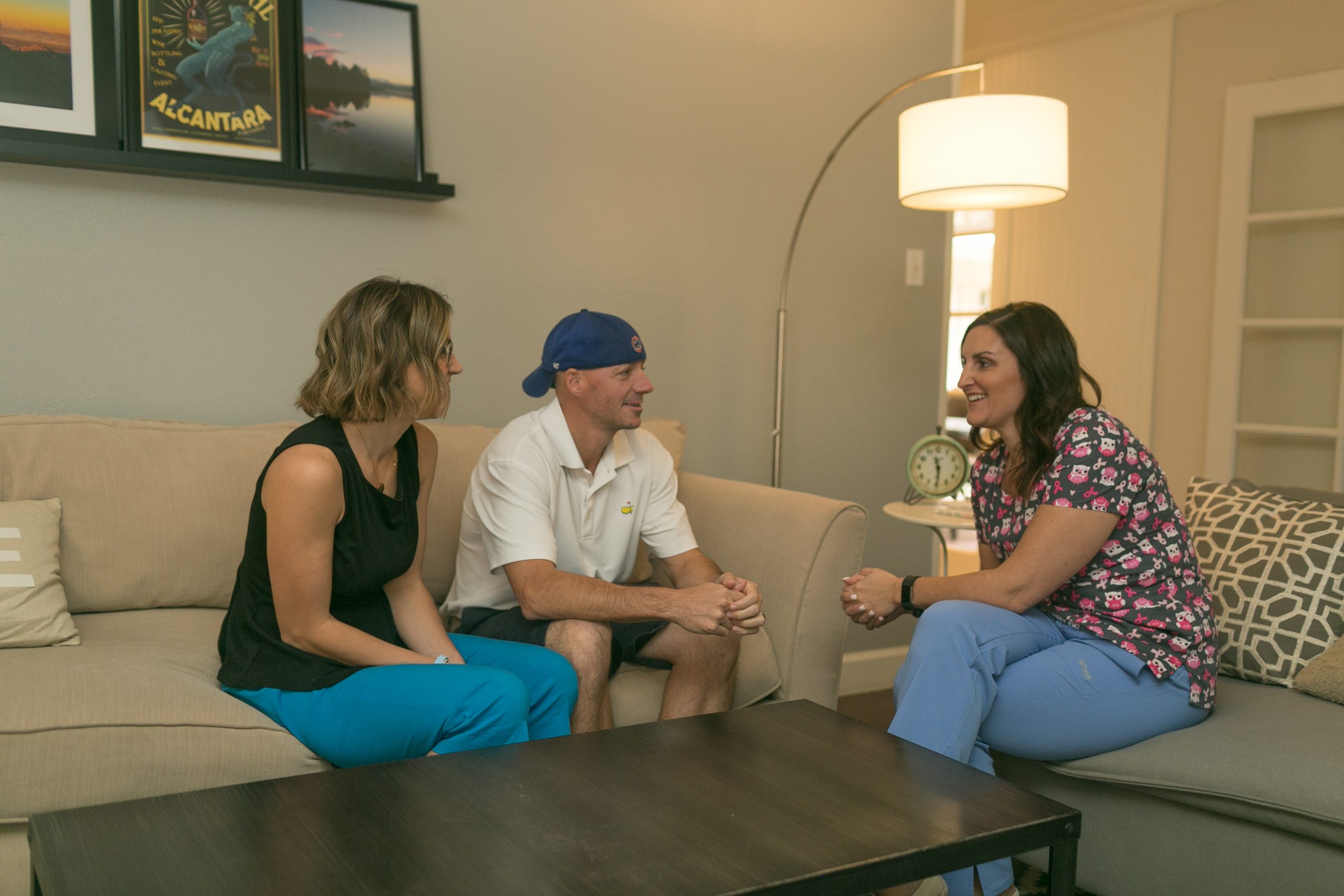In-home care can greatly simplify life for busy families of special needs children. Instead of parents shuttling their children around town for various therapies and medical appointments, MGA Homecare’s expert providers can enter their patients’ homes to provide professional care.
While in-home care may streamline schedules for these families, there are certain considerations to be made when having professionals in and out of your home each week. For some parents, this can be an adjustment at first.
If you’re new to your child’s in-home nursing or therapy arrangement, here are six tips to help the adjustment period go smoothly.
Communicate Expectations
MGA Homecare offers every family the opportunity to meet with potential caregivers prior to the first appointment. Use this time to ask what to expect from visits, and communicate your own expectations to ensure everyone is on the same page.
Once you’ve engaged with a nurse or therapist, establish a way in which you can freely communicate any questions or concerns on an ongoing basis. Whether in person, or by phone, text, or email, communication should freely flow from both parties.
Don’t Clean House
Many people feel the need to clean their home whenever they are expecting house guests. However, your new life with in-home nursing and therapy means that outside visitors may become a weekly or even daily expectation.
Your child’s nurse or therapist is there to serve your family, not to increase your anxiety level. Rest assured that they do not expect your home to be spotless for each visit. They are accustomed to fitting into their patients’ everyday lives, and they understand that life with kids is messy by nature.
If you can make sure there’s a reasonably tidy place to work (such as a spot on the rug for the physical therapist, or a clutter-free table for the speech therapist), do not stress out about the laundry on the couch or dishes in the sink. And please, don’t panic if you’re still sporting bedhead and sweatpants when the doorbell rings.
Plug-In
Even if your child’s nurse has given you the green light to run an errand or get housework done during their visits, try to remain plugged in. Pay attention to the way the provider interacts with your child. Are they cheerful and warm? Does your child seem relaxed and happy in their care? Even parents of nonverbal children can read physical cues to determine their comfort level.
Speech, occupational, and physical therapists may appreciate parental involvement in therapy sessions. Only so much progress can be made in one hour of therapy, so the child’s long-term growth is dependent upon parents who are informed enough to reinforce therapy tactics between visits.
Therapists usually appreciate parents informing them of any particular problem areas, new behaviors, or negative habits to address during future sessions. Parents should also contribute to setting appropriate therapy goals for their child.
Make time to read any articles or research they provide to you about your child’s condition. Educating yourself will improve your ability to parent and advocate for your child, both now and in the future.
Staying engaged will also give you the peace of mind that they are in excellent hands, and allow you to build a strong relationship of trust with their caregiver.
Remain Flexible
Once that bond has been established, it is natural to grow attached. It’s an emotional experience to place your child in someone else’s care, and the prospect of change can be overwhelming. As difficult as it may be to accept, life happens: caregivers move out of state, go back to school for advanced degrees, and eventually retire.
Transitioning to new faces – especially when you’ve been comfortable and happy with someone else for many years – can be difficult. But it’s important to go into each new relationship with an open mind and an open heart. The parents’ energy and attitude toward these transitions can greatly impact the child’s ability to adjust.
Try to accept that, while the new association will never be exactly the same as the first, it can be equally as positive and effective.
Find the Right Balance
Depending on your child’s diagnosis, you may be encouraged to pursue a variety of therapy treatments, in addition to in-home nursing. Some children benefit from speech, occupational, and physical therapy to support their development.
However, only you know your child’s limitations, and it is your job to find the right balance for your family. Ask yourself if pursuing all of the recommended therapies at once would be too exhausting for your little one. Would scheduling these appointments force you to sacrifice baseball practice or dance lessons for your other children?
If the recommended course of action would overwhelm your family, find a way to prioritize in a way that makes sense to you. For instance, you could consider semi-monthly physical therapy sessions, versus weekly, with reinforcement from parents between appointments. Or, perhaps the pull-out speech services provided to them at school would be sufficient to reduce the number of in-home speech therapy sessions throughout the month.
Your MGA Homecare team will work with you to set a sustainable pace for your family.
Trust Your Gut
While MGA Homecaregoes to great lengths to create compatible matches, not every pairing will be a good fit. If you’ve given your child’s nurse or therapist ample time to connect with your child during multiple sessions, and the relationship still doesn’t seem to be clicking, it’s a good idea to raise your concerns with your case manager. Perhaps minor adjustments can be made to help them warm up to each other. If not, a new placement may be best.
Trusting your parental instincts will help you be the advocate your child needs and deserves. And, finding the right match can lead to very special relationships that will help your child progress and reach their full potential, whatever that may be.

